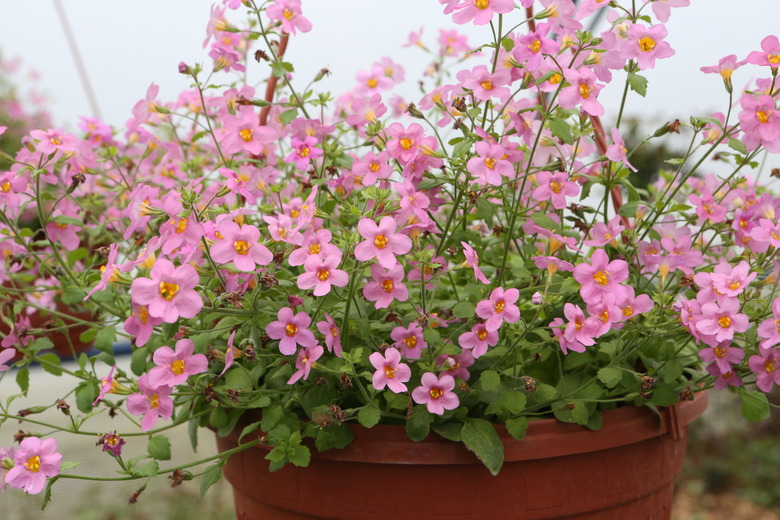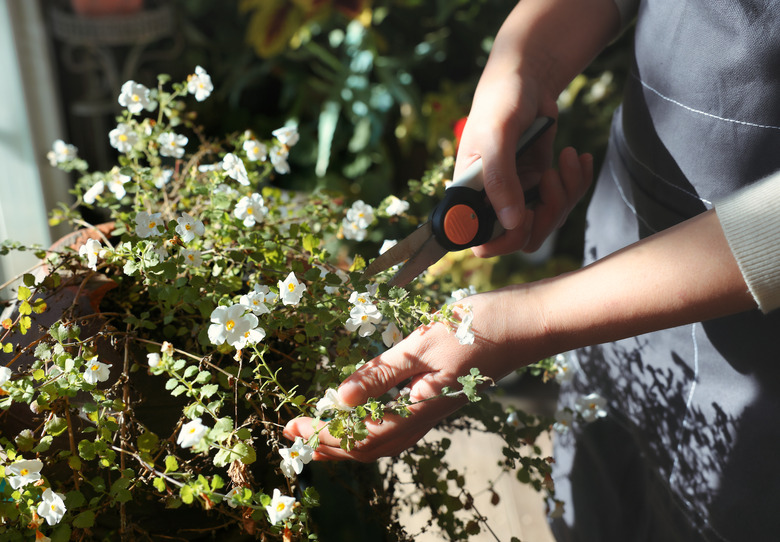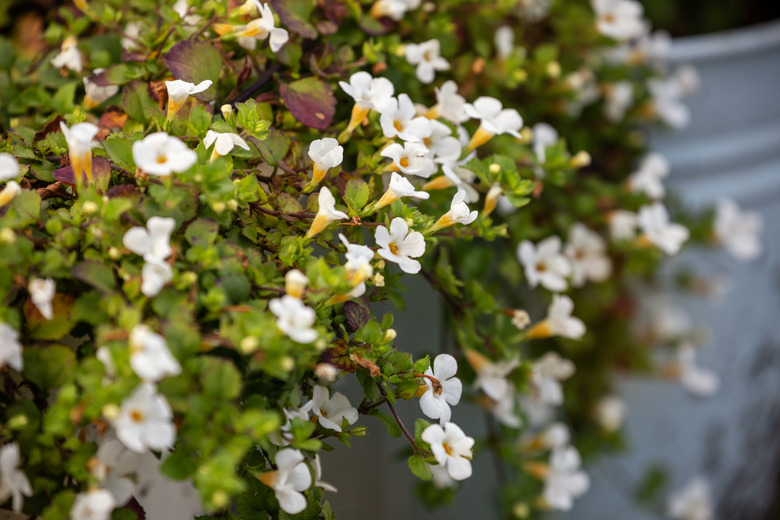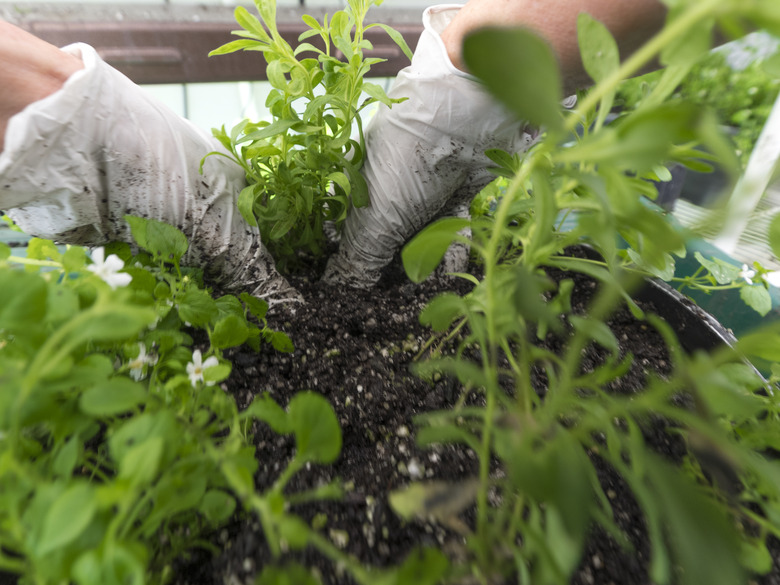How To Winterize Bacopa Plants
Showy, short-lived bacopa plants (Chaenostoma cordatum) are typically grown as annuals but can be maintained as tender perennials within U.S. Department of Agriculture plant hardiness zones 9a to 11a, if they are given the right care during the winter months.
Overwintering potted bacopa plants is easy, but those grown in the garden need more extensive help to survive the frost in climates at the cooler end of their hardiness zones.
Bacopa has been previously known by the scientific names Sutera cordata, Bacopa cordata and Sutera diffus.
Overwintering Bacopa Plants Indoors
Potted bacopa plants will survive the winter merely by moving them indoors, but they will emerge in spring as healthier, more vibrant plants if they are placed in the right position and given regular attention during the winter months.
Moving Bacopa Plants Indoors
Like all perennials, bacopa plants need to rest during the winter months. Placing them in a bright, unheated room indoors will provide them with enough light to stay alive while not exposing them to the warm temperatures that promote active growth.
When choosing an indoor location to overwinter bacopa plants, consider:
- **Temperature:** Place bacopa plants in a cool room where temperatures stay above 50°F.
- **Brightness:** Choose a place with bright light such as near a window with southern, western or eastern exposure.
- **Humidity:** Avoid placing these sensitive plants near heater vents where they will dry out.
Tip
Small bacopa plants growing in the garden can be dug up, potted and overwintered indoors too.
Caring for Bacopa Plants Indoors
Bacopa requires little more than light watering and occasional pruning during the winter months, but both must be done properly to prevent problems.
They do not use much water in winter. So the purpose of watering is to prevent the plant from wilting and to keep the soil from drying out and pulling away from the edges of the pot.
- **Water:** Check the soil moisture every few days and drench the soil with water whenever it feels dry when probed with your finger.
- **Prune:** Use sharp, clean pruning shears to nip off any dead stems as they develop.
Moving Bacopa Outdoors in Spring
Bacopa that has overwintered indoors should be slowly acclimated to outdoor conditions in spring, a few weeks after the last frost. Move the plant to a bright, sheltered location during the day and back indoors at night.
After a week, leave the plant outdoors overnight for three full days before moving it to its permanent location. Plant bacopa in full sun or light shade in fertile, fast-draining soil.
Tip
The process of acclimating plants to outdoor conditions is called "hardening off."
Overwintering Bacopa Plants Outdoors
Bacopa is harder to overwinter outdoors because it is extremely sensitive to cold temperatures. With the right covering and care, however, the plant will successfully survive the cold and return in spring, flush with new green growth and the dainty, trumpet-shaped flowers it is known for.
Covering and Mulching Bacopa
Bacopa needs to be covered and mulched to protect it from the cold. In autumn, spread a 2-inch-thick layer of mulch around the plants so that it lays close to the soil over the root zone with the long, slender stems spread over the top of the mulch. Use lightweight mulch such as straw, which will insulate the plants without crushing them, and remove the old mulch in spring.
Cover bacopa if temperatures are forecasted to fall below 30°F. Use a lightweight and breathable cover such as a thin cotton sheet to keep frost from settling on the leaves. Suspend it on stakes 1 to 2 inches above the plants rather than letting the sheet rest directly on the plants. Remove the sheet after temperatures warm up again.
Tip
Water the bacopa deeply before mulching it, because moist soil holds more warmth than dry soil.
Starting New Bacopa Plants
In colder climates, it is not always possible to overwinter bacopa plants, so many gardeners opt to root new plants from cuttings before the old plant dies back in autumn.
Bacopa cuttings root quickly and will be ready for transplanting by the following spring. Here's how:
- Take a 3- to 5-inch-long cutting from the tip of a stem.
- Strip off the leaves from the bottom half of the stem and remove any flowers.
- Stick the leafless part of the stem in a pot of moist soil. Press the soil against the stem.
- Cover the pot with a clear plastic bag.
- Set the pot near a bright window out of direct sunlight during the winter months.
- Check the moisture level in the soil every week and remoisten it if it feels dry.
The following spring, remove the plastic bag from the bacopa cutting while it is still indoors. Let it acclimate to lower humidity levels for a week or two before moving it outdoors.
Tip
Start more bacopa cuttings than you think you need because some may fail to root.



